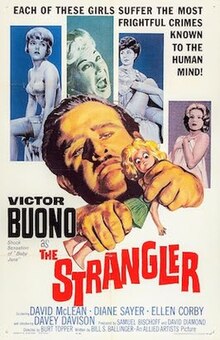The Hillside Strangler, later the Hillside Stranglers, is the media epithet for one, later discovered to be two, American serial killers who terrorized Los Angeles, California, between October 1977 and February 1978, with the nicknames originating from the fact that many of the victims' bodies were discovered in the hills surrounding the city.
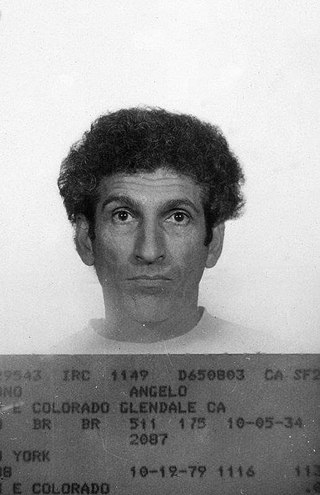
Angelo Anthony Buono Jr. was an American serial killer, kidnapper and rapist who, together with his adopted cousin Kenneth Bianchi, were known as the Hillside Stranglers. Buono and Bianchi were convicted of killing ten young women in Los Angeles, California, between October 1977 and February 1978.
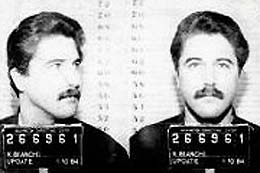
Kenneth Alessio Bianchi is an American serial killer, kidnapper, and rapist. He is known for the Hillside Strangler murders committed with his cousin Angelo Buono Jr. in Los Angeles, California, as well as for murdering two more women in Washington by himself. Bianchi is currently serving a sentence of life imprisonment in Washington State Penitentiary for these crimes. Bianchi was also at one time a suspect in the Alphabet murders, three unsolved murders in his home city of Rochester, New York, from 1971 to 1973.

Albert Henry DeSalvo was an American rapist/killer and suspected serial killer in Boston who purportedly confessed to being the "Boston Strangler," the murderer of thirteen women in the Boston area from 1962 to 1964. In 1967, DeSalvo was imprisoned for life for committing a series of rapes; however, his murder confession has been disputed and debate continues as to which crimes he actually committed.
The Boston Strangler is the name given to the murderer of 13 women in Greater Boston during the early 1960s. The crimes were attributed to Albert DeSalvo based on his confession, on details revealed in court during a separate case, and DNA evidence linking him to the final victim.

Victor Charles Buono was an American actor, comic, and briefly a recording artist. He was known for playing the villain King Tut in the television series Batman (1966–1968) and musician Edwin Flagg in What Ever Happened to Baby Jane? (1962), the latter of which earned him Academy Award and Golden Globe Award nominations. He was a busy actor from his late teens until his death at the age of 43 and, with his large size and sonorous voice, he made a career of playing men much older than he was.
Joachim Georg Kroll was a German serial killer, child molester, necrophile and cannibal who murdered a minimum of eight women and young girls in the Ruhr metropolitan region from 1955 until his arrest on 3 July 1976. He was convicted of eight murders and one attempted murder, but confessed to a total of 14. He was sentenced to life imprisonment on 8 April 1982.

Charles Lee "Chucky" Ray is the main antagonist of the Child's Play horror franchise. Chucky is portrayed as a vicious serial killer who, as he bleeds out from a gunshot wound, transfers his soul into a "Good Guy" doll and continuously tries to transfer it to a human body. The character has become one of the most recognizable horror icons and has been referenced numerous times in popular culture. In 1999, the Chucky character was nominated for the MTV Movie Award for Best Villain for the film Bride of Chucky. He was created by writer Don Mancini and is portrayed by Brad Dourif in both live action and voice over. For the 2019 remake of the same name, Mark Hamill voiced an artificial intelligence (AI) version of Chucky as a tragic villain, having previously voiced the Charles Lee Ray version of the character in an episode of Robot Chicken.

Phillip Carl Jablonski was an American serial killer convicted of killing five women in California and Utah between 1978 and 1991.
The Hillside Strangler is a 2004 horror film directed by Chuck Parello and written by Stephen Johnston, based on the true story of Kenneth Bianchi and Angelo Buono Jr., the Hillside Strangler serial killers. The film stars C. Thomas Howell as Bianchi and Nicholas Turturro as Buono.
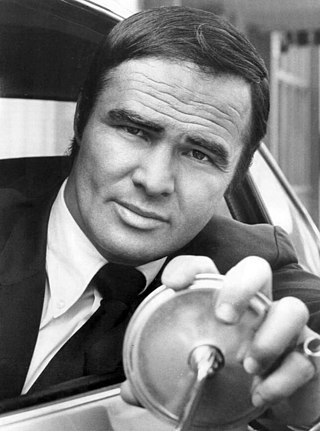
Dan August is an American drama series that aired on ABC from September 23, 1970, to April 8, 1971. Burt Reynolds played the title character. Reruns of the series aired in prime time on CBS from May to October 1973 and from April to June 1975.

The Haunted Strangler is a 1958 British horror film directed by Robert Day. It was adapted from "Stranglehold", a story which screenwriter Jan Read had written specially for Boris Karloff, and was shot back to back with producer Richard Gordon's Fiend Without a Face, with both later being released as a double feature by MGM.
Burt Topper was an American film director and screenwriter best known for cult films aimed at teenagers.
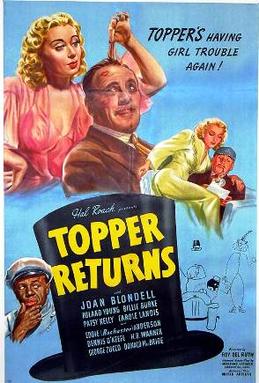
Topper Returns is a 1941 American supernatural comedy thriller film directed by Roy Del Ruth and written by Jonathan Latimer. The third and final installment in the initial series of supernatural comedy films inspired by the novels of Thorne Smith, it succeeds Topper (1937) and Topper Takes a Trip (1938).
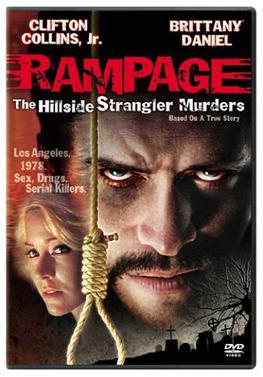
Rampage: The Hillside Strangler Murders is a 2006 American direct-to-video crime thriller about the Hillside Strangler murders. The film featured Brittany Daniel, Lake Bell and Michelle Borth, with Tomas Arana and Clifton Collins Jr. playing the killers Angelo Buono and Kenneth Bianchi, respectively. It was directed by Chris Fisher.
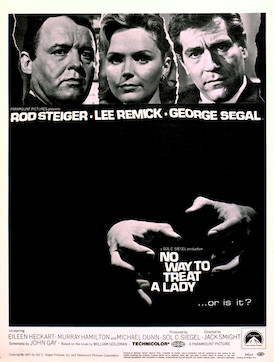
No Way to Treat a Lady is a 1968 American psychological thriller film with elements of black comedy, directed by Jack Smight, and starring Rod Steiger, Lee Remick, George Segal, and Eileen Heckart. Adapted by John Gay from William Goldman's 1964 novel of the same name, it follows a serial killer in New York City who impersonates various characters in order to gain the trust of women before murdering them.

Anthony Edward Sowell was an American serial killer and rapist known as The Cleveland Strangler or The Imperial Avenue Murderer. He was convicted in 2011 of murdering 11 women whose bodies were discovered at his Cleveland, Ohio, home in 2009. After being sentenced to death for the murders, Sowell died in prison from a terminal illness.

Rodney James Alcala was an American serial killer and sex offender who was sentenced to death in California for five murders committed between 1977 and 1979, receiving an additional sentence of 25 years to life after pleading guilty to two further homicides committed in New York State in 1971 and 1977. While he has been conclusively linked to eight murders, Alcala's true number of victims remains unknown and could be much higher – authorities believe the actual number is as high as 130.

Harrison Frank "Marty" Graham is an American serial killer who murdered seven women in Philadelphia, Pennsylvania between mid-1986 to mid-1987, keeping their remains in his apartment. In 1988, he was found guilty on all charges and sentenced to death, but his sentences were later commuted to life imprisonment. Graham lived less than a mile and a half away from the home of another murderer, Gary M. Heidnik, who was also arrested during the same time period for similar crimes.
